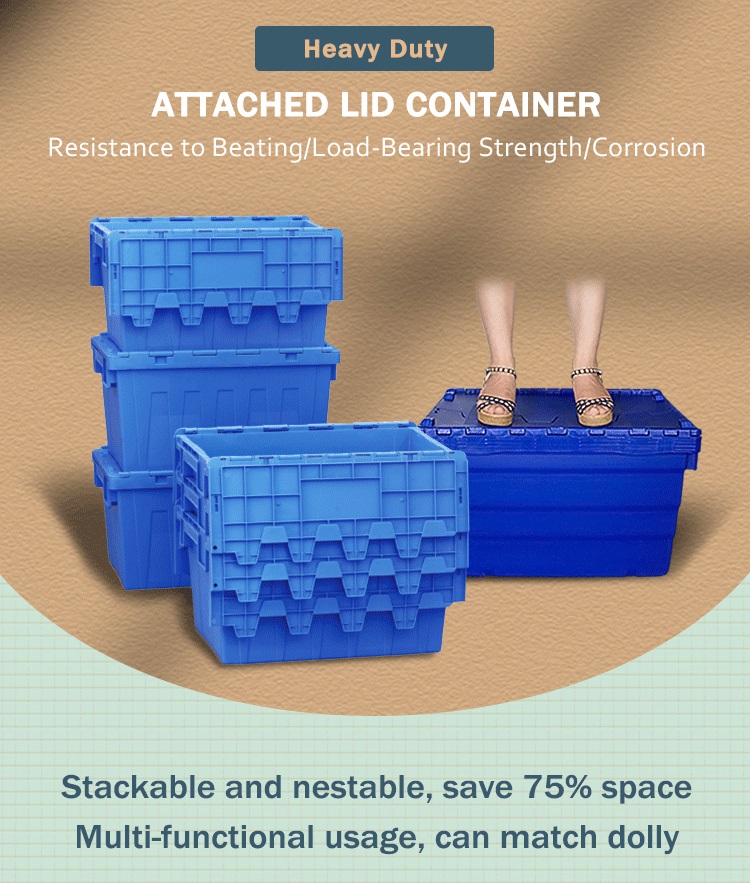For e-commerce warehouses, manufacturing parts shipping, and 3PL (third-party logistics) companies, key pain points limiting efficiency include collision damage, dust contamination, stacked collapse during transit, and empty container storage waste—and the logistics-specific Attached Lid Container solves these with targeted design, becoming a practical solution to optimize transportation links.
High load-bearing capacity and impact resistance are core advantages. Made of thickened HDPE material with reinforced ribs on sidewalls, each container supports 30-50kg, and remains undistorted even when stacked 5-8 layers high. It directly replaces traditional cartons or simple plastic boxes, effectively reducing extrusion damage to parts, electronic components, and other goods during handling and bumpy transportation—cutting cargo damage rates by over 40%.
Sealed protection suits multi-category cargo. The lid and container body close tightly with a snap-fit, paired with a waterproof strip. It blocks dust and moisture during transit to protect precision parts or paper documents from dampness; it also prevents leakage of liquid reagents or paste-like materials, adapting to special logistics scenarios like chemical and food raw material shipping.
Space optimization helps cut costs and boost efficiency. With unified standard design, full containers stack tightly—improving space utilization by 30% compared to ordinary containers, saving truck cargo space and warehouse storage. Empty containers nest together: 10 empty containers take up only the volume of 1 full container, significantly reducing empty container return transportation costs and storage occupancy.
Turnover convenience enhances operational efficiency. The container surface has a reserved label area for direct logistics waybill pasting or coding, facilitating cargo traceability. Its smooth outer wall is easy to clean, enabling repeated turnover (service life of 3-5 years) without additional packaging. Replacing disposable cartons reduces packaging waste and lowers long-term procurement costs.
Post time: Sep-26-2025





